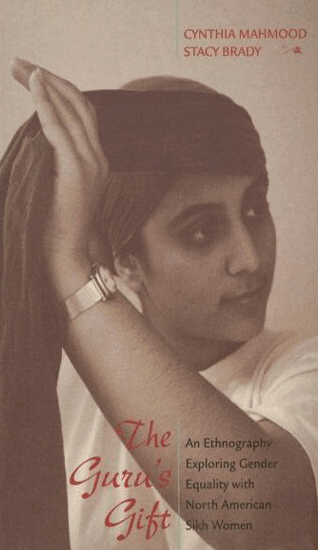The Guru's Gift
A Book Review by HARPREET SINGH
THE GURU'S GIFT: AN ETHNOGRAPHY EXPLORING GENDER EQUALITY WITH NORTH AMERICAN SIKH WOMEN, by Cynthia Mahmood & Stacy Brady. McGraw Hill, 1999. English, paperback, pp 123. ISBN-10: 076741781X; ISBN-13: 978-0767417815
This book has been selected sikhchic.com's Book of The Month for October 2011.
THE REVIEW
The Guru's Gift is co-authored by Dr. Cynthia Mahmood, an anthropologist who also wrote Fighting For Faith and Nation: Dialogues with Sikh Militants. Stacy Brady, the other co-author, is one of Dr. Mahmood's students.
This book is the first of its kind in Sikh women's studies. It draws and engages the reader into a variety of experiences of young Sikh women with whom research was conducted. These women have much to share; their ability to fluently communicate in English breaks away many barriers that often prevent anthropologists from conducting groundbreaking research like the present one.
As a Sikh, I found the study illuminating because many issues faced by North American Sikh women are often not discussed.
From Mahmood's and Brady's work, it is refreshing to see that North American Sikh women truly understand that they derive their equality from divine revelation imparted to the Sikh Gurus (founders of the religion) and not from any new-age movement. Their interviews are stimulating and their struggle to take back their rights is inspiring.
The co-authors have been successful in creating an atmosphere conducive to open dialogue by creating persisting relationships with these young women and thus establishing a new standard in anthropological research.
Stacy Brady calls it "covenantal relationship," which is "a close and enduring relationship that operates under openness and informed consent and with mutually beneficial research and shared objectives."
She believes that these women were not merely "subjects" of research but became her friends and (fictive) sisters. Such mutually beneficial relationship is essential for the success of any anthropological endeavor, where a group decides to impart sensitive information to a relative newcomer, the anthropologist.
Apart from gender equality, Mahmood and Brady have been successful in facilitating discussion on a myriad of issues that require resolution by the Sikhs. They range from the more frequent ones like the antithetical influence of sub-caste during marriage, arranged marriage and the role of the turban among Sikh women, to the less likely and foreign ones such as homosexuality.
Many of the issues such as homosexuality touched upon by their interlocutors, are largely unknown to the Sikhs. However, since the Sikhs reside in a multi-faceted North American society, discussion on such issues is essential as Sikhs shall have to address them in relation to other communities or perhaps even their own.
The Sikhs, as a people (quom), have a personal law and a code of conduct that is dynamic and evolving. The Sikh Rehat Maryada, the present code of conduct that is followed by all committed Sikhs, was written after all major representative organizations of the Sikhs in the Punjab - the Sikh homeland - and abroad, deliberated for more than 20 years over the vital issues affecting the Sikhs and Sikhism.
The document is cherished by the Sikhs because it is a result of consensus among the Sikh community. The Sikh Rehat Maryada does not address many new issues, such as euthanasia and abortion, because they were less critical or even unknown in 1930s when the Sikhs ratified their code of conduct.
Works such as Mahmood's and Brady's are essential because they encourage the Sikhs to engage in open debate on these issues that were left unaddressed by the charismatic community of the Sikhs.
The subject of Sikh women wearing a turban as a means of differentiating themselves from others has received extensive treatment in this book.
Mahmood's and Brady's study on North American Sikh women makes an engaging and resourceful ethnography. It highlights Sikh women attempting to retain their identity in North American and Punjabi cultures, both of which are often at conflict with the Sikh culture that Sikh women are striving to fully revive.
New and old copies of this book are easily available from, inter alia, amazon.com.
This review was first published in 2000 on amazon.com.
[October 1, 2011]
Conversation about this article
1: Baldev Singh (Bradford, United Kingdom), October 01, 2011, 10:09 AM.
North American Sikh women and girls need to use the power of the media to show that there is an ideological system which puts all other ideologies, including all religions to disturbing shame. And they need to use their skills and the full weight of their numbers to ensure that Sikh practice in Punjab and the diaspora gets back to actual and full implementation of the message of the Gurus vis-a-vis gender equality. Looks like some of our men have dropped the ball.
2: Gurdip Kaur (U.S.A.), October 18, 2011, 1:45 PM.
I agree with you, Mr. Singh. If we have a force of Sikh women, we know we can impact the other Sikhs. As a matter of fact, it can just start from one person and gradually become viral. In the coming times, may the Sikh women educate the rest about what it means to be a Sikh.




